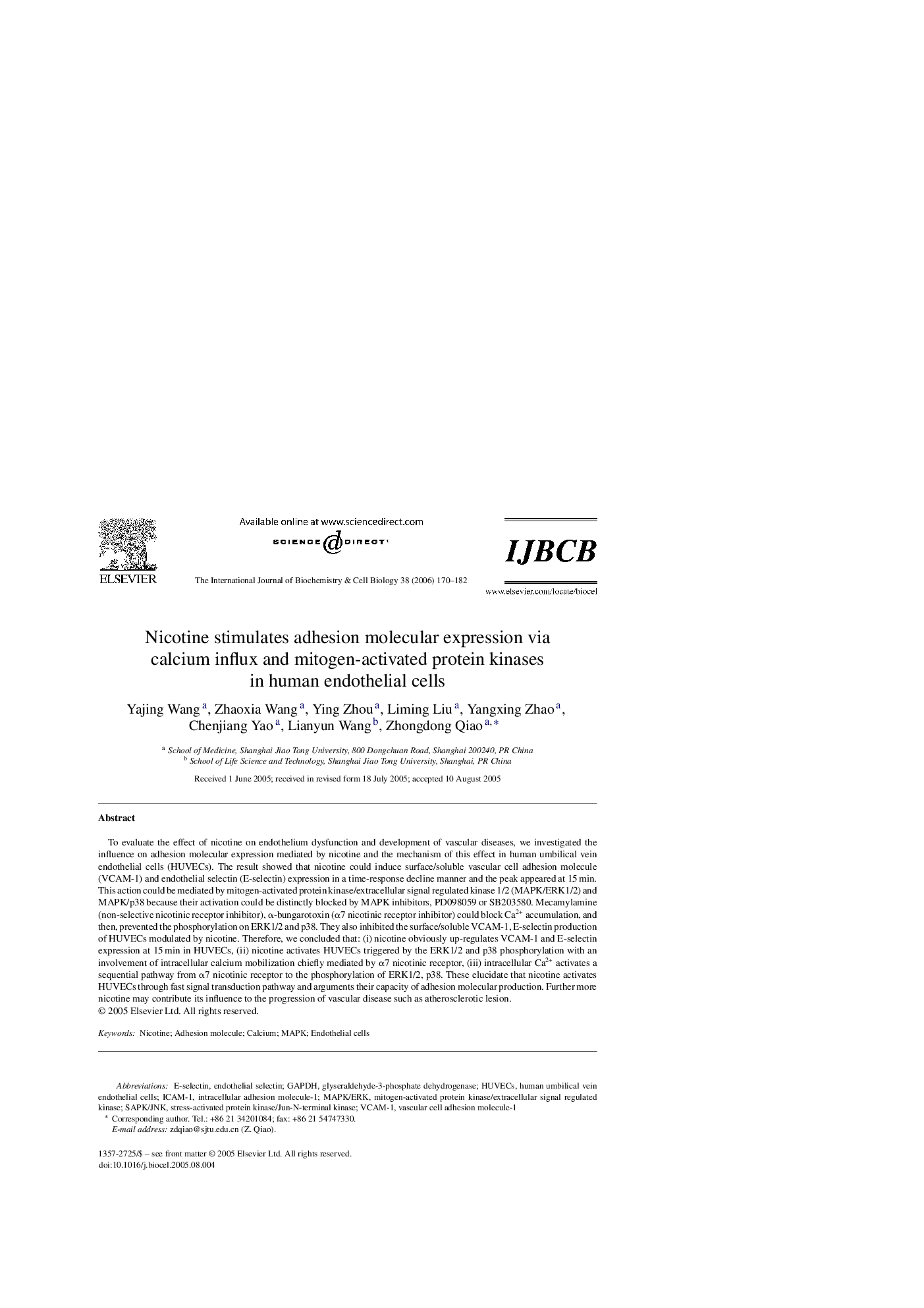| Article ID | Journal | Published Year | Pages | File Type |
|---|---|---|---|---|
| 1984712 | The International Journal of Biochemistry & Cell Biology | 2006 | 13 Pages |
To evaluate the effect of nicotine on endothelium dysfunction and development of vascular diseases, we investigated the influence on adhesion molecular expression mediated by nicotine and the mechanism of this effect in human umbilical vein endothelial cells (HUVECs). The result showed that nicotine could induce surface/soluble vascular cell adhesion molecule (VCAM-1) and endothelial selectin (E-selectin) expression in a time-response decline manner and the peak appeared at 15 min. This action could be mediated by mitogen-activated protein kinase/extracellular signal regulated kinase 1/2 (MAPK/ERK1/2) and MAPK/p38 because their activation could be distinctly blocked by MAPK inhibitors, PD098059 or SB203580. Mecamylamine (non-selective nicotinic receptor inhibitor), α-bungarotoxin (α7 nicotinic receptor inhibitor) could block Ca2+ accumulation, and then, prevented the phosphorylation on ERK1/2 and p38. They also inhibited the surface/soluble VCAM-1, E-selectin production of HUVECs modulated by nicotine. Therefore, we concluded that: (i) nicotine obviously up-regulates VCAM-1 and E-selectin expression at 15 min in HUVECs, (ii) nicotine activates HUVECs triggered by the ERK1/2 and p38 phosphorylation with an involvement of intracellular calcium mobilization chiefly mediated by α7 nicotinic receptor, (iii) intracellular Ca2+ activates a sequential pathway from α7 nicotinic receptor to the phosphorylation of ERK1/2, p38. These elucidate that nicotine activates HUVECs through fast signal transduction pathway and arguments their capacity of adhesion molecular production. Further more nicotine may contribute its influence to the progression of vascular disease such as atherosclerotic lesion.
